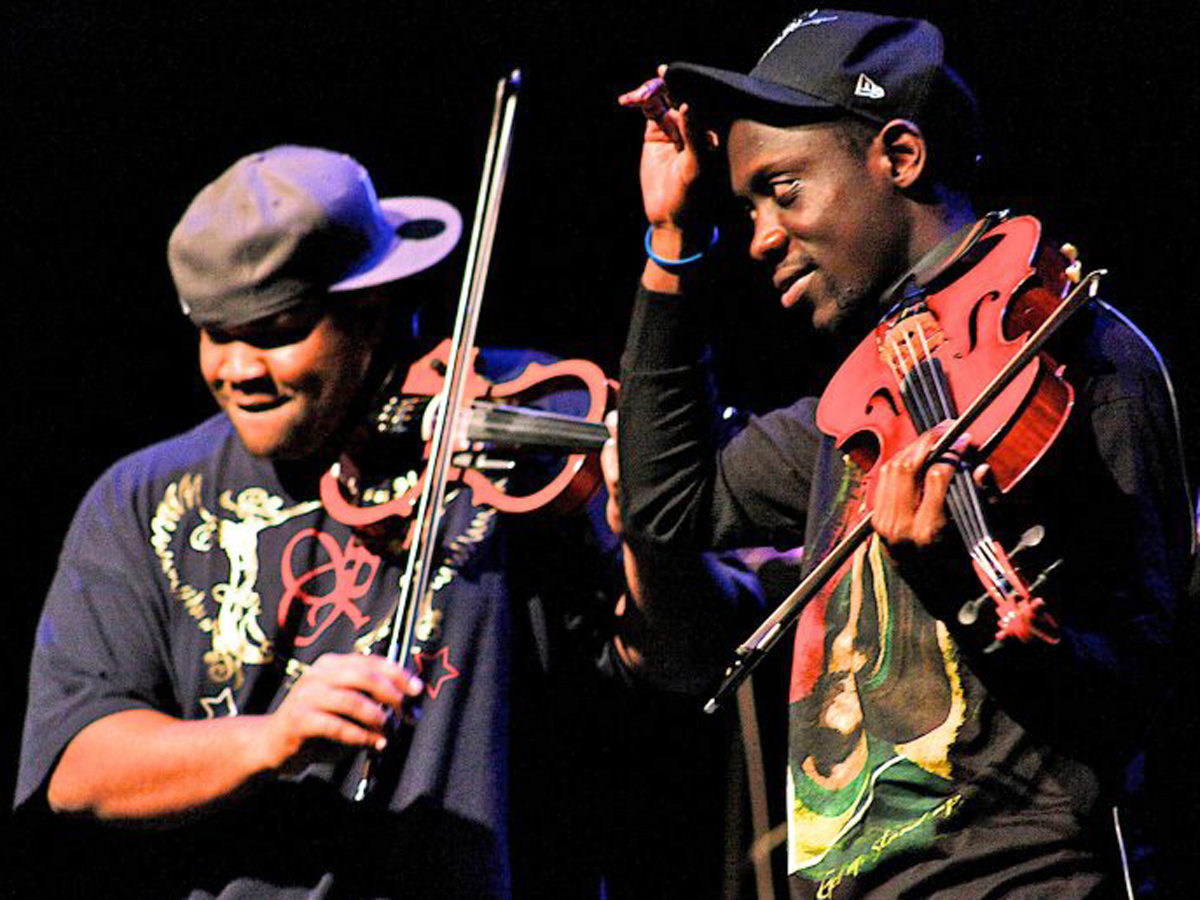What do you get when you fuse classical music with jazz, hip-hop and funk?
It’s the revolutionary music group Black Violin – two classically trained musicians who combine a daunting array of musical styles and influences ranging from Shostakovich and Bach to Nas and Jay-Z to create a signature sound.
Black Violin’s Wil B and Kev Marcus will bring their viola, violin and DJ to East Central University on March 16 [FRIDAY] for an 8 p.m. concert in the Ataloa Theatre in the Hallie Brown Ford Fine Arts Center. It is the last of the touring shows in ECU’s 2011-12 fine arts season.
“I’m excited to have them at ECU,” said Dr. Brad Jessop, director of ECU’s School of Fine Arts. “I watched how they have a broad appeal to a diverse audience. Both young urban and classical fans really respond well to what they do.”
Tickets are $18 and may be purchased online at tickets.ecok.edu or reserved by calling the theatre’s box office at 580-559-5751 or emailing boxoffice@ecok.edu. In addition, 200 tickets will be available to ECU students for $5. All tickets, including those for season ticket holders, should be picked up at the will call window the night of the concert. Any remaining tickets will be sold at the door.
Black Violin is described as breaking all the rules, “blending the classical with the urban musical genre to create something rare – a sound that nobody has ever heard, but that everybody wants to feel.”
Wil B learned to play the viola when he was 14 years old and Kev Marcus began learning the violin at age 9. They met at the Dillard High School of Performing Arts in Fort Lauderdale, Fla., a school whose exceptional music programs nurtured their already budding talents.
Both received full music scholarships to college, Wil B to Florida State University and Kev Marcus to Florida International University. It was at FIU that Kev B met the group's future manager, Sam G. The two musicians soon formed a production company with him, DKNEX.
But it was the work of legendary violinist Stuff Smith that planted the seeds for what would become Black Violin. Smith, born in 1909, was one of the pre-eminent jazz violinists of the swing era who performed with Alphonse Trent, Coleman Hawkins, Charlie Parker, Dizzy Gillespie and Sun Ra throughout a long and storied career.
Smith’s final and most soulful album, “Black Violin,” so inspired and influenced the two young musicians that they would eventually name their band in honor of the man who had shown them that there were no limits to what the violin could do.
Black Violin began tearing down musical stereotypes and erasing the lines of traditional thinking to push the musical envelope into the future. In 2004 they joined superstar Alicia Keys on stage at the Billboard Music awards, delivering a performance that made everyone sit up and take notice. In 2005, the group was awarded the coveted title of Apollo Legend by the esteemed Apollo theatre in Harlem.
Next, Mike Shinoda, lead singer of the rock act Linkin Park, who was impressed by their imaginative composition and finely tuned musicianship, invited them on a world tour with his hip-hop side project, Fort Minor. That allowed them to introduce their brand of genius to audiences across the globe. Black Violin also has worked with musicians as diverse as P. Diddy, Kanye West, Fifty Cent, Aerosmith, Tom Petty, Aretha Franklin and the Eagles, among many others.
The group has released its debut album and continues to tour far and wide, opening for hip hop mainstays like Fat Joe, Akon and the Wu-Tang Clan in locations as diverse as Prague, Dubai and South Africa. Black Violin’s rising fame has also made it a highly desired act for celebrity events and it has provided the soundtrack for a television show and the backdrop for a popular soft drink commercial.
Black Violin’s musicians also want to give children the same opportunities they had. Concerned that urban youth will not have the benefit of music as a positive alternative to other more destructive pursuits if school music programs are dropped, they have embarked upon a campaign of using youth orchestras and reinvigorated music programs to show children and teens that they are capable of expressing themselves in ways they have never dreamed.

